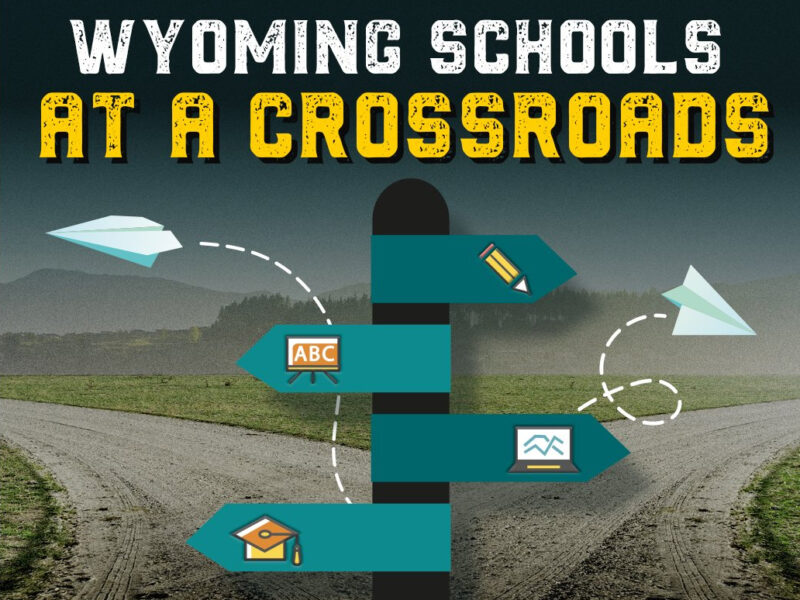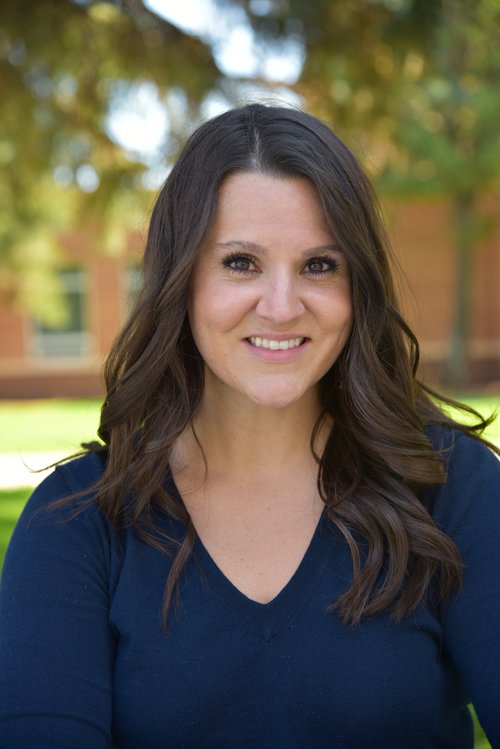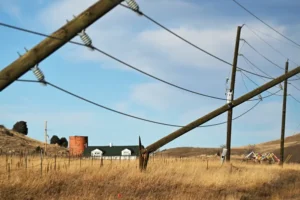WYOMING SCHOOLS AT A CROSSROADS: Parent Concerns Addressed During Tumultuous First Year with Wit and Wisdom
State’s largest district begins second year with controversial language arts program, while Laramie sees test scores continue to improve from its use
- Published In: Other News & Features
- Last Updated: Nov 10, 2022

By Elizabeth Sampson
Special to the Wyoming Truth
When Cheyenne schools rolled out Wit and Wisdom as their K-6 curriculum last fall, some parents protested at school board meetings, citing concerns that the books were not age appropriate or taught critical race theory. Around the same time, conservative Moms for Liberty groups challenged the literacy program at school board meetings nationwide.
Now parent protests against the curriculum have mostly given way to challenges to books in school libraries. But for those parents with lingering concerns about Wit and Wisdom—the K-8 English language arts curriculum that uses a variety of fiction and nonfiction books instead of a single textbook—Katie Dijkstal, Cheyenne’s English language arts coordinator, is working to address them.
“Parents came at this with many different backgrounds, many different ideas, and we truly used that feedback—good, bad and indifferent—to inform our programming in this office,” Dijkstal said. “Even the strongest pieces of pushback helped us to become better—with communication, with teacher training, with parent involvement.”

Sarah Bieber, of Casper, is vice chair of Natrona County Moms for Liberty. While Casper does not use Wit and Wisdom, Bieber said she and other members of her organization have researched the program. She believes Wit and Wisdom includes tenants of social emotional learning (SEL), which is described by one website as teaching students responsible decision making, relationship skills, social awareness, self-awareness and self-management.
Bieber said when Moms for Liberty of Natrona County started researching social emotional learning programs, they didn’t always agree with their curriculum.
“A lot of the information we found goes against what we as parents wanted for our children—how we teach our children to treat each other and to treat their siblings—it didn’t agree with a lot of that,” she said.
Dijkstal said Laramie County School District 1 does teach social emotional learning, but it is not part of the Wit and Wisdom curriculum.
“This is where it gets really hard, because there is so much misunderstanding around SEL,” Dijkstal said. “Is it a part of our SEL programming in the district? No, it is its own separate entity. Do kids gain really wonderful social advantages from some of the lessons they learn in the books and some of the activities and the collaborative structures they engage in? Sure, absolutely.”
Bieber, who pulled her 13-year-old daughter out of a Casper public school last year, questions whether Wit and Wisdom teaches the fundamentals of reading, such as phonics and sentence structure.
“Does this program actually teach kids to read, or is it just more books in a school that we are paying for?” Bieber asked. “I don’t understand if it isn’t about the fundamentals of reading and teaching kids K-6 the fundamentals, then what is it actually doing?”
Dijkstal noted that LCSD1 uses other programs to teach fundamentals.
“Then there is Wit and Wisdom, which is a comprehensive core reading program,” she said. “It’s not so much the how, it’s the what and it’s the why.” She said the program incorporates music, videos and activities that reinforce the core texts, giving students a variety of ways to learn the material.

Laramie reading scores improve
Albany County District 1 in Laramie has used Wit and Wisdom since 2016, and in that time, students’ reading test scores have consistently improved, according to Debbie Fisher, assistant superintendent and curriculum coordinator.
Forty percent of students scored proficient or advanced on the WY-TOPP before Wit and Wisdom was introduced, Fisher said. Since then, students’ scores have increased to the 55% to 60% percent range and continue to climb.
Previously, Laramie saw a disparity with elementary school performance, Fisher said. Some schools produced high scores, while others had very low scores. Wit and Wisdom balanced it out.
“Every school is pretty much consistently right in the same window, so the equity has increased tremendously,” she said.
It wasn’t until 2021, when Wit and Wisdom entered the national dialogue, that parent pushback on the program emerged.
“The Civil Rights unit tends to be the one parents get worried about, but it’s very much what I learned when I was in school—Martin Luther King, Rosa Parks,” Fisher said. “It doesn’t teach it any differently. Parents that I have sat down with and have looked at it with have all left there and said, ‘We’re fine with this.’”
Such scrutiny can lead to partnership with parents, and Fisher encourages them to talk to her about what their kids are learning.
“That’s what we want—for them to feel they can trust us, and that we are doing what we’re supposed to do and not trying to go outside of those bounds,” Fisher said. “They’re just trying advocate for their kids and the values they have. If we can talk to them and feel that we can come to a good place, I think that’s the perfect solution. If there is something that maybe we missed, then it is good for us to know that so we can correct it.”
Dijkstal said LCSD1 spent nearly a year evaluating each book in the curriculum to determine whether it was appropriate and useful. The district website notes where books, videos, photos or poems have been removed, modified or now include instructions to teachers on how to present them.
In the Civil Rights module, the district replaced “Separate is Never Equal: Sylvia Mendez and Her Family’s Fight for Desegregation” by Duncan Tonatiuh with “Without Separation” by Larry Dane Brimmer, not because of the content, but because the vocabulary and syntax of the original selection were too complex for second graders.
Fourth grade students read “Walk Two Moons” by Sharon Creech, which discusses a stillbirth. Cheyenne’s review committee opted to have schools send a letter to parents informing them of the topic before the teacher read those pages to students, letting parents decide whether their child would participate in that part of the discussion. Parents receive lists of all texts and supplemental items included in each unit.
Dijkstal said LCSD1 will begin evaluating the success of the program with test scores this spring, but teachers are currently taking the curriculum to the next level. Fourth graders have a module on resilience and survival, and some teachers are leading field trips to the district’s wilderness property to practice those survival skills.
“I want parents to know what amazing, cool things kids are doing with this,” Dijkstal said. “It’s not just read a book and answer some questions and open up a packet. The experiences that teachers are providing for our kids with the program are really fantastic.”













